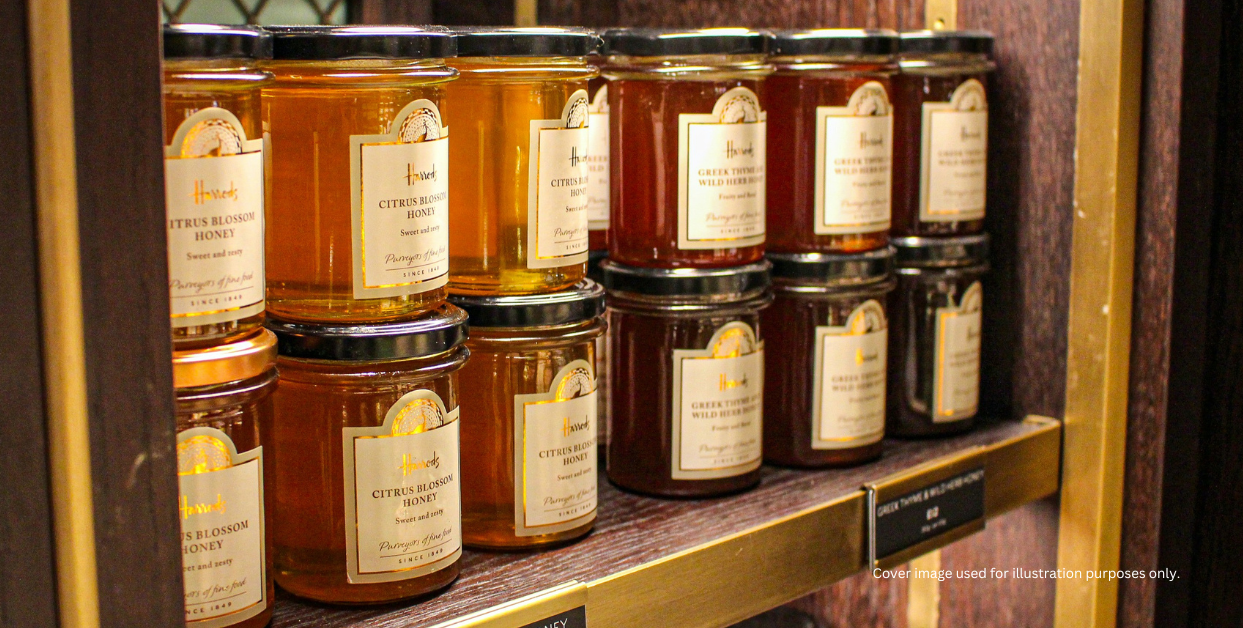90% Of Honey In Malaysia Is Fake? Here's A Guide On How To Check If Your Honey Is Genuine
Don't fall for the fake stuff!
 Cover image via Malgorzata Bujalska/Unsplash
Cover image via Malgorzata Bujalska/UnsplashHoney is a rich antioxidant and is packed with essential vitamins and minerals
The superfood not only tastes delicious, it also has many health-promoting properties, such as B vitamins, calcium, iron, magnesium, potassium, and zinc.
Recently, news reports have surfaced that 90% of honey sold in Malaysia is fake.
With a few simple techniques, you can discern whether the honey you purchased is genuine or fake.
1. Look at the label to check the ingredients
Image via Bee Great
The easiest and fastest way to discern if honey is genuine is by checking the ingredients list on the label.
Legitimate honey should contain only one ingredient: honey.
Imported honey from the US will also have a True Source Certified label, while some Malaysian honey manufacturers will be KKM registered and approved.
Checking labels can be tricky if you're purchasing honey online or directly from farmer's markets. To be safe, you can opt to get your honey from verified suppliers or supermarkets. But if you'd still like to support local farmer's markets (as you should), there are other ways to check the legitimacy of the honey.
2. Add a tablespoon of honey to a glass of water
Genuine honey will settle at the bottom of the glass and stick together in a thick blob. Fake honey, on the other hand, may dissolve or mix readily with the water.
This happens because real honey has a higher density and viscosity compared to counterfeit varieties, which are often a mix of sugars and water.
3. Put some honey on your finger or thumb
This can get messy, but your sense of touch is important. Put a little bit of honey on your thumb or finger, and watch how the substance spreads.
Authentic honey will stick to your thumb or finger and remain in place without dripping off the sides. Fake honey, often mixed with syrup or other substances, tends to run or spread.
This is not the most reliable method, as different varieties of honey can have runnier consistencies.
4. Check for crystallization in the bottle or jar
Image via Savannah Bee
Over time, natural honey tends to crystallize, forming granules or a solid mass. This is a natural process and indicates the purity of the honey.
Fake honey, however, may not crystallize or could exhibit inconsistent crystallization patterns. Be wary of honey that remains liquid for an unusually long period, as it may have been overly processed or adulterated.
5. If you're feeling adventurous, conduct a flame test
Dip the wick of a candle or a cotton pad into a bit of honey. Light the candle or the cotton pad.
Genuine honey will ignite easily and sustain the flame due to its low moisture content. If the honey is fake, the candle or cotton pad won't be able to burn or it may make a crackling sound. This could signify the addition of water and other substances.
6. Place a few drops of honey on a piece of paper towel
Image via Wiki How
This is a way to check if the honey has been diluted with water, which will be absorbed or leave a wet mark.
Authentic honey should not be absorbed by the paper towel.
Fake honey, which often contains additional moisture, may be absorbed by the paper or leave it damp. However, a honey that has been diluted with sugar syrup will also not be absorbed.
7. Finally, trust your senses!
Image via Darcey Beau/Unsplash
Genuine honey typically has a distinct aroma and flavour that varies depending on the floral source. It may also have slight variations in colour and texture, reflecting its natural origin.
If the honey smells off, tastes strange, or lacks the characteristic sweetness of honey, it may be counterfeit.






